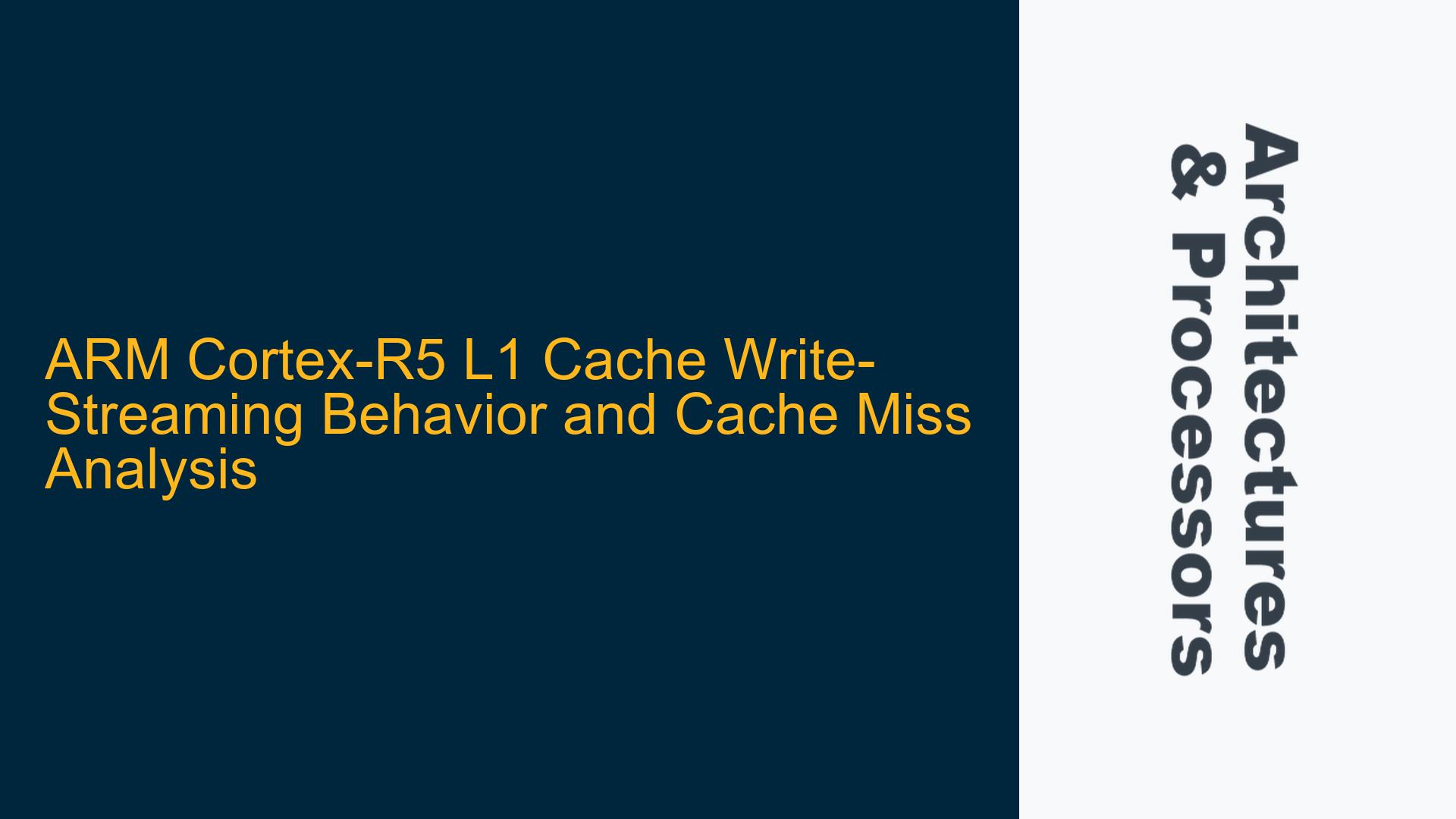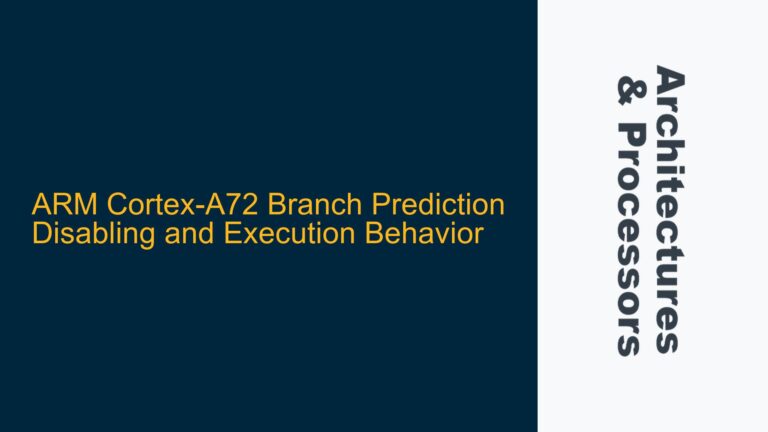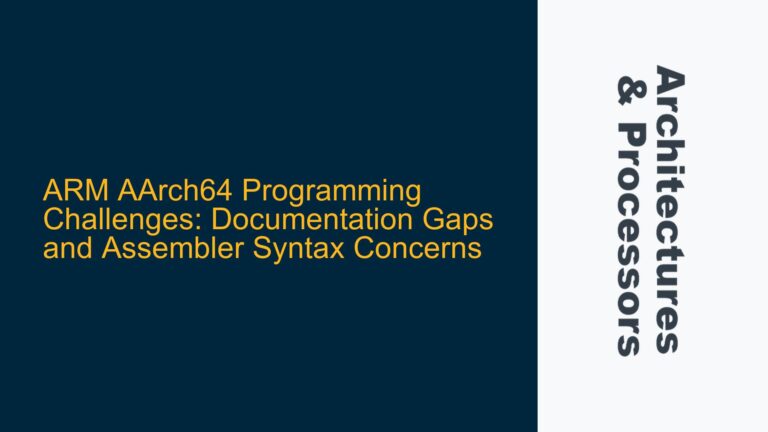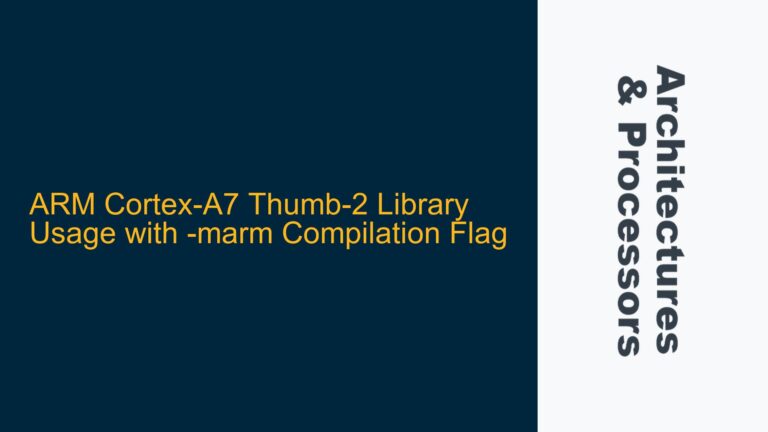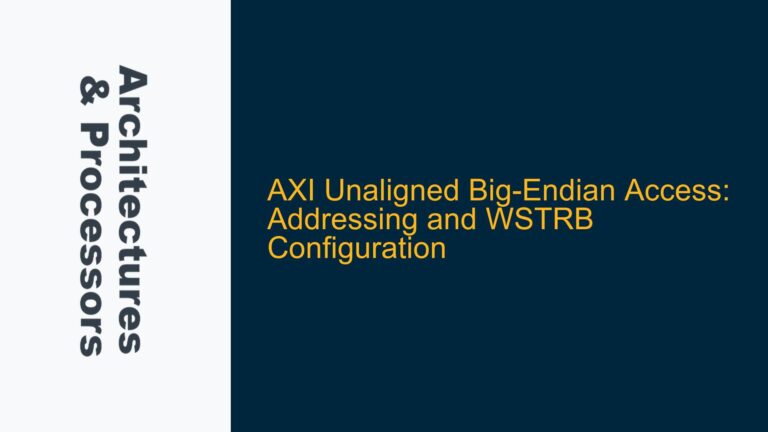Cortex-R5 L1 Cache Write-Streaming Mode and Cache Miss Anomalies
The ARM Cortex-R5 processor is widely used in real-time embedded systems due to its deterministic performance and robust feature set. One of the key features of the Cortex-R5 is its L1 cache subsystem, which includes separate instruction and data caches. However, there is some ambiguity regarding the support for write-streaming mode in the Cortex-R5’s L1 data cache (Dcache). Additionally, users have observed unexpected cache miss behavior when performing large memory operations, such as memset, on cacheable, write-back, write-allocated memory regions. This post delves into the technical details of these issues, explores potential causes, and provides actionable solutions.
Cortex-R5 L1 Cache Architecture and Write-Streaming Mode
The Cortex-R5’s L1 cache architecture is designed to optimize performance for real-time applications. The L1 data cache is typically configured as write-back, write-allocate, meaning that writes to cacheable memory regions are first written to the cache and only later written back to main memory when the cache line is evicted. Write-streaming mode, on the other hand, is a feature that allows data to be written directly to memory without being cached, which can be beneficial for certain types of data that are written once and not reused.
The Cortex-R5 Technical Reference Manual (TRM) does not explicitly mention support for write-streaming mode in the L1 data cache. This absence of documentation suggests that the Cortex-R5 may not support write-streaming mode in the same way that other ARM cores, such as the Cortex-A series, do. However, the observed behavior of low cache miss rates during large memset operations raises questions about how the Cortex-R5 handles cacheable memory writes.
When performing a memset operation on a 1MB memory region configured as cacheable, write-back, write-allocate, the Cortex-R5 exhibits only three data cache misses. This behavior is unexpected because, in a typical write-back, write-allocate cache, each cache line (usually 32 bytes) would be expected to cause a cache miss when it is first written to, resulting in a much higher number of cache misses for a 1MB region.
The explanation for this behavior lies in the way the Cortex-R5 handles cacheable memory writes. When a memset operation is performed, the Cortex-R5’s cache controller may optimize the write process by allocating cache lines without necessarily causing a refill from the level 2 (L2) memory. This optimization can result in a lower number of cache misses, as the cache lines are allocated but not refilled from L2 memory. This behavior is consistent with the Cortex-R5 TRM’s definition of a cache miss, which is a data read/write to normal cacheable memory that causes a refill from L2 memory.
Memory Configuration and Cache Controller Behavior
The Cortex-R5’s cache controller behavior is influenced by the memory configuration and the specific cache policies in use. In the case of a memset operation on a 1MB memory region configured as cacheable, write-back, write-allocate, the cache controller may employ several optimizations to reduce the number of cache misses.
First, the cache controller may use a technique called "write combining," where multiple writes to the same cache line are combined into a single write operation. This technique reduces the number of cache misses by minimizing the number of times a cache line needs to be refilled from L2 memory. Write combining is particularly effective for large memset operations, where the same value is written repeatedly to consecutive memory locations.
Second, the cache controller may use a "write-allocate" policy, where a cache line is allocated in the cache even if it is not present in the cache at the time of the write. This policy ensures that subsequent writes to the same cache line do not cause additional cache misses, as the cache line is already present in the cache. The write-allocate policy is particularly effective for large memset operations, where the same cache line may be written to multiple times.
Finally, the cache controller may use a "write-back" policy, where writes to cacheable memory are first written to the cache and only later written back to main memory when the cache line is evicted. This policy reduces the number of writes to main memory, which can improve performance and reduce power consumption. However, the write-back policy can also lead to unexpected cache miss behavior, as the cache lines may not be immediately written back to main memory.
Implementing Cache Management and Data Synchronization
To address the unexpected cache miss behavior and ensure optimal performance, it is important to implement proper cache management and data synchronization techniques. These techniques can help to ensure that the Cortex-R5’s cache controller behaves as expected and that cacheable memory writes are handled efficiently.
One important technique is to use data synchronization barriers (DSBs) to ensure that all writes to cacheable memory are completed before proceeding to the next operation. A DSB instruction ensures that all memory accesses before the barrier are completed before any memory accesses after the barrier are executed. This technique can be particularly useful for large memset operations, where it is important to ensure that all writes to cacheable memory are completed before proceeding to the next operation.
Another important technique is to use cache maintenance operations to ensure that the cache is properly managed. The Cortex-R5 provides several cache maintenance operations, including cache clean, cache invalidate, and cache clean and invalidate. These operations can be used to ensure that the cache is properly synchronized with main memory and that cache lines are properly allocated and evicted.
For example, a cache clean operation can be used to ensure that all dirty cache lines are written back to main memory. This operation can be particularly useful for large memset operations, where it is important to ensure that all writes to cacheable memory are completed before proceeding to the next operation. Similarly, a cache invalidate operation can be used to ensure that all cache lines are invalidated, which can be useful for ensuring that the cache is properly synchronized with main memory.
Finally, it is important to carefully configure the memory attributes and cache policies for the Cortex-R5’s L1 data cache. The memory attributes and cache policies can have a significant impact on the cache controller’s behavior and the overall performance of the system. For example, configuring a memory region as cacheable, write-back, write-allocate can improve performance for certain types of data, while configuring a memory region as non-cacheable can improve performance for other types of data.
In conclusion, the Cortex-R5’s L1 cache behavior during large memset operations can be explained by the cache controller’s optimizations and the specific memory configuration in use. By implementing proper cache management and data synchronization techniques, it is possible to ensure that the Cortex-R5’s cache controller behaves as expected and that cacheable memory writes are handled efficiently. Proper configuration of the memory attributes and cache policies is also important for ensuring optimal performance.
